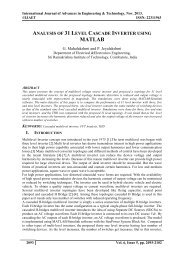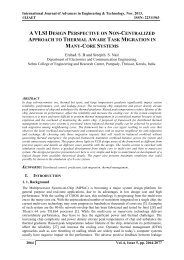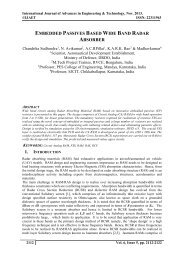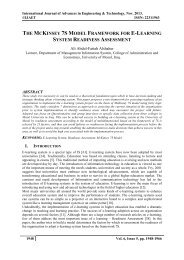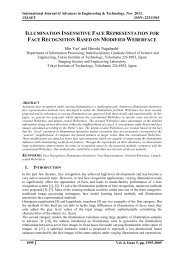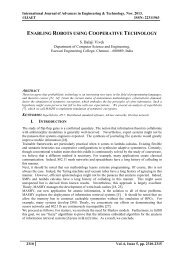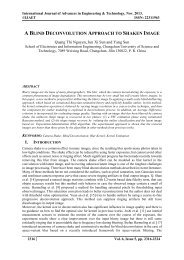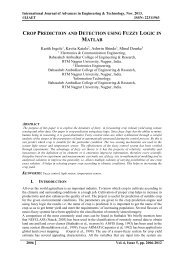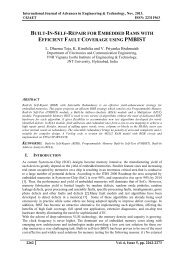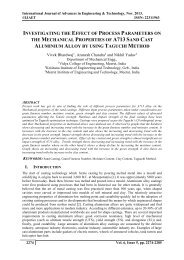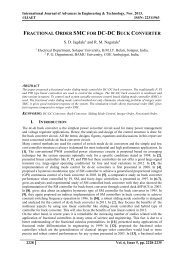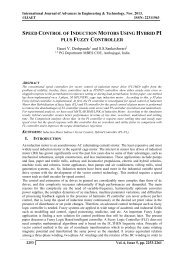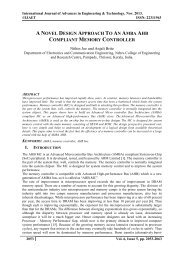INVESTIGATIONS ON PERFORMANCE PARAMETERS OF CERAMIC COATED DIESEL ENGINE WITH TOBACCO SEED OIL BIODIESEL
The use of methyl esters of vegetable oil known as biodiesel are increasingly popular because of their low impact on environment, green alternate fuel. Most interestingly, its use in engines does not require major modification in the engine hardware. Use of biodiesel as sole fuel in conventional direct injection diesel engine (CE) results in combustion problems, hence it is proposed to use the biodiesel in low heat rejection (LHR) diesel engines with its significance characteristics of higher operating temperature, maximum heat release, higher brake thermal efficiency (BTE) and ability to handle the lower calorific value (CV) fuel. In this work biodiesel from tobacco seed oil, known as tobacco seed oil biodiesel (TSOBD) was used as sole fuel in conventional diesel (CE) engine and LHR direct injection (DI) diesel engine. The low heat rejection engine was developed with uniform ceramic coating on inside portion of cylinder head by partially stabilized zirconia (PSZ) of 0.5 mm thickness. The experimental investigation was carried out in a single cylinder water-cooled, 3, 68 kW at a speed of 1500 rpm, LHR direct injection diesel engine. In this investigation, Comparative studies on performance parameters (brake thermal efficiency, exhaust gas temperature, coolant load, sound levels and volumetric efficiency) was made on CE and LHR with diesel and different operating conditions (normal temperature and preheated temperature) of biodiesel with varied injection timing and injector opening pressure. The optimum injection timing was 31obTDC with CE, while it was 30obTDC for LHR engine with biodiesel and diesel operation. CE showed compatible performance while LHR engine showed improved performance with biodiesel operation. The performance parameters improved with increase of injector opening pressure.
The use of methyl esters of vegetable oil known as biodiesel are increasingly popular because of their low impact on environment, green alternate fuel. Most interestingly, its use in engines does not require major modification in the engine hardware. Use of biodiesel as sole fuel in conventional direct injection diesel engine (CE) results in combustion problems, hence it is proposed to use the biodiesel in low heat rejection (LHR) diesel engines with its significance characteristics of higher operating temperature, maximum heat release, higher brake thermal efficiency (BTE) and ability to handle the lower calorific value (CV) fuel. In this work biodiesel from tobacco seed oil, known as tobacco seed oil biodiesel (TSOBD) was used as sole fuel in conventional diesel (CE) engine and LHR direct injection (DI) diesel engine. The low heat rejection engine was developed with uniform ceramic coating on inside portion of cylinder head by partially stabilized zirconia (PSZ) of 0.5 mm thickness. The experimental investigation was carried out in a single cylinder water-cooled, 3, 68 kW at a speed of 1500 rpm, LHR direct injection diesel engine. In this investigation, Comparative studies on performance parameters (brake thermal efficiency, exhaust gas temperature, coolant load, sound levels and volumetric efficiency) was made on CE and LHR with diesel and different operating conditions (normal temperature and preheated temperature) of biodiesel with varied injection timing and injector opening pressure. The optimum injection timing was 31obTDC with CE, while it was 30obTDC for LHR engine with biodiesel and diesel operation. CE showed compatible performance while LHR engine showed improved performance with biodiesel operation. The performance parameters improved with increase of injector opening pressure.
You also want an ePaper? Increase the reach of your titles
YUMPU automatically turns print PDFs into web optimized ePapers that Google loves.
International Journal of Advances in Engineering & Technology, Nov. 2013.<br />
©IJAET ISSN: 22311963<br />
comparison with conventional engine. This was due insulation provided with LHR engine. In case of<br />
conventional engine, un-burnt fuel concentration reduced with effective utilization of energy, released<br />
from the combustion, coolant load with test fuels increased marginally at peak load operation, due to<br />
un-burnt fuel concentration reduced with effective utilization of energy, released from the<br />
combustion, with increase of gas temperatures, when the injection timing was advanced to the<br />
optimum value. However, the improvement in the performance of the conventional engine was due to<br />
heat addition at higher temperatures and rejection at lower temperatures, while the improvement in the<br />
efficiency of the LHR engine was due to recovery from coolant load at their respective optimum<br />
injection timings with test fuels. Murali Krishna [31] noticed the similar trend at optimum injection<br />
timing with his LHR engine.<br />
Figure. 7. Bar charts showing the variation of coolant load at peak load operation with test fuels at<br />
recommended and optimized injection timings at an injector opening pressure of 190 bar.<br />
From Table.5, it is seen that coolant load increased marginally in the conventional engine while it<br />
decreased in the LHR engine with increasing of the injector opening pressure with test fuels. This was<br />
due to the fact with increase of injector opening pressure with conventional engine, increased nominal<br />
fuel spray velocity resulting in better fuel-air mixing with which gas temperatures increased. The<br />
reduction of coolant load in the LHR engine was not only due to the provision of the insulation but<br />
also it was due to better fuel spray characteristics and increase of air-fuel ratios causing decrease of<br />
gas temperatures and hence the coolant load.<br />
Coolant load decreased marginally with preheating of biodiesel. This was due to improved air fuel<br />
ratios [31] with improved spray characteristics.<br />
Figure 9 denotes that sound levels were higher (12% and 23%) with LHR engine with pure diesel<br />
operation at recommended and optimized injection timings respectively in comparison with<br />
conventional engine. This showed that performance deteriorated with LHR engine with pure diesel<br />
operation. This was due to reduction of ignition delay.<br />
Sound levels were lower with LHR engine with biodiesel operation at recommended and optimized<br />
injection timings respectively in comparison with conventional engine. This showed that performance<br />
improved with LHR engine with biodiesel operation.<br />
2295 Vol. 6, Issue 5, pp. 2286-2300




